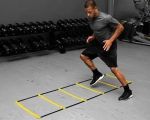How to Incorporate Mindfulness Into Your Workouts
As someone who has always been passionate about fitness, I can honestly say that incorporating mindfulness into my workouts has transformed my entire approach to exercise. For years, I worked out simply to build strength, lose weight, or improve my endurance. While these goals are important, I never fully realized how much my mental state impacted my performance. Once I started practicing mindfulness during my workouts, I began to see more benefits than just physical results. If you’re curious about how mindfulness can enhance your fitness routine, let me share how it has helped me—and how you can bring it into your own workouts.
1. What is Mindfulness in Exercise?
Mindfulness in exercise involves being fully present and aware during your workout. It means paying attention to how your body feels, your breath, and the movements you’re making, without distraction or judgment. In the past, I used to rush through my workouts, thinking only about finishing or pushing through the reps. But once I embraced mindfulness, I realized that slowing down and focusing on my breath and movements allowed me to connect deeper with my body, improving not just my physical performance but also my mental well-being.
Mindfulness is about awareness. Whether you’re doing yoga, running, lifting weights, or any other form of exercise, being mindful means observing your body’s sensations, focusing on your breathing, and bringing your attention to the present moment. This practice helps reduce stress, enhance focus, and make workouts more enjoyable. By simply being aware of the present, I was able to perform exercises with better form, reduce the risk of injury, and feel more connected to my body.
2. Benefits of Mindfulness in Workouts
The benefits of mindfulness in workouts are both physical and mental. For me, the most obvious improvement was in my physical performance. When I started practicing mindfulness, I became more aware of my body’s movements, which led to improved posture and better form during exercises like squats, deadlifts, and lunges. I could better identify when I was using the wrong muscles or straining my joints, and adjust my technique accordingly. This focus on form not only made my workouts more effective but also helped prevent injuries.
Mentally, mindfulness made my workouts more enjoyable. I started to notice how much more relaxed and centered I felt after exercising. Instead of just checking off the workout as a task to complete, I began to enjoy the process. Mindful exercise helped me clear my mind, reduce anxiety, and even improve my sleep. It became a form of mental self-care that complemented the physical benefits of exercise. And I found that I could actually push myself harder when I was focused on the present, because I wasn’t distracted by negative thoughts or fatigue.
3. How to Incorporate Mindfulness Into Your Workouts
Incorporating mindfulness into your workouts doesn’t require a complete overhaul of your fitness routine. It’s more about the attitude and approach you bring to each exercise. Here are a few practical tips that helped me begin practicing mindfulness during my workouts:
- Focus on Your Breath: One of the simplest ways to practice mindfulness during exercise is by paying attention to your breath. I began by focusing on my inhales and exhales while lifting weights or doing cardio. With each breath, I could feel myself becoming more grounded and aware of my body. As I exhaled, I made sure to release tension in my body, helping me stay calm and centered.
- Slow Down: In the beginning, I rushed through my workouts because I was eager to finish. But by slowing down, I was able to focus more on each movement and engage the muscles I was targeting. If you’re doing exercises like squats or push-ups, try slowing your pace and holding the position for a few seconds before moving to the next. This allows you to be more mindful of your body’s alignment and movements.
- Be Present: I found that when I was truly present during my workouts, I could eliminate distractions. Instead of thinking about what I had to do after my workout or getting lost in a playlist, I focused solely on the exercise at hand. I paid attention to the sensations in my body—the stretch in my muscles, the rhythm of my movement, and the feeling of strength with each rep. This made my workouts feel more fulfilling and purposeful.
- Set Intentions: Before starting any workout, I began setting an intention for that session. For example, I would remind myself to focus on building strength or improving flexibility. This practice helped me stay connected to my goals and allowed me to approach each session with a sense of purpose.
- Mindful Recovery: Mindfulness doesn’t just apply to the workout itself but also to the recovery process. After a workout, I take a few minutes to stretch and focus on my breath. This helps me bring my mind and body back to a state of balance, allowing me to fully recover from the physical exertion. I also make sure to hydrate mindfully, paying attention to how my body feels as I rehydrate.
4. Mindful Workouts for Different Exercise Types
Mindfulness can be integrated into nearly any form of exercise. Here are a few examples of how mindfulness can enhance different types of workouts:
- Yoga: Yoga is naturally a mindful practice, as it emphasizes breathwork and movement. However, even in yoga, you can deepen your mindfulness practice by focusing more on your alignment and how each pose feels in your body. I’ve found that slowing down during each posture and syncing my breath with the movements has improved my flexibility and strength.
- Running: For runners, mindfulness can help with pacing, breathing, and reducing mental fatigue. I’ve practiced mindful running by focusing on my stride, breathing rhythm, and the sensation of my feet hitting the ground. This has made running feel more enjoyable and helped me push through longer distances.
- Strength Training: During weightlifting, mindfulness can improve form and muscle engagement. By paying attention to each rep and focusing on the muscles being worked, I can ensure I’m targeting the right areas and reducing strain on my joints. Mindful lifting helps me push through plateaus and achieve better results.
5. Overcoming Challenges with Mindfulness in Workouts
When I first started incorporating mindfulness into my workouts, I faced some challenges. It wasn’t always easy to stay present, especially during high-intensity sessions or when I was feeling fatigued. At times, my mind wandered, and I found it difficult to focus on my breath or the sensations in my body. But over time, I learned that mindfulness is a skill that improves with practice. The more I worked at being present, the easier it became.
If you find yourself struggling with mindfulness during your workouts, don’t be discouraged. Start small by practicing for just a few minutes at the beginning of your session, and gradually build up your awareness as you get more comfortable. Eventually, you’ll find that mindfulness becomes second nature, and it will bring both physical and mental rewards to your fitness routine.
By incorporating mindfulness into your workouts, you can deepen your connection with your body, improve your performance, and make exercise more enjoyable. For me, mindfulness has not only enhanced my fitness journey but also transformed the way I view movement and health. If you’re ready to experience these benefits for yourself, I encourage you to give mindful exercise a try—you might just find it to be the missing piece in your fitness routine.
For more tips on mindfulness in fitness, or to find classes and resources to support your practice, visit [Fitness] for personalized recommendations and services.








